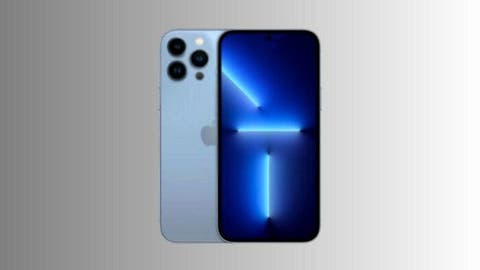Since the launch of the iPhone X back in 2017, Apple has consistently used OLED displays for its flagship iPhones. Samsung and LG have been Apple’s main screen suppliers. In recent times, Apple has been trying to add BOE to its display supply chain. The company also first used the notch design on the iPhone X. Well, it is yet to change the design four years down the road. With the iPhone 13 series, Apple was only able to reduce the size of the notch. However, it may take some time before we see a flagship iPhone without a notch design. According to recent reports, the iPhone 14 Max may retain the notch design.
If the recent rumor is true, the iPhone 14 Max may be a retrograde device. The source claims that the iPhone 14 Max has a high possibility of using a 6.7-inch screen with a notch. Furthermore, this screen will also come with a 60Hz refresh rate. The source claims that Apple may use these features due to cost considerations.
It turns out that the iPhone 14 series will have four models. The models will include
- 6.1-inch iPhone 14 with a notch
- 6.7-inch iPhone 14 Max with a notch
- 6.1-inch iPhone 14 Pro with a punch-hole display
- 6.7-inch iPhone 14 Pro Max with a punch-hole display
After canceling the mini version, the new 6.1-inch iPhone 14 will be the cheapest in the series. This will be followed by the 6.7-inch iPhone 14 Max. However, the cost of the screens purchased by Apple has always been high. Considering that the size of the display is now increasing, the cost is also increasing. Thus, Apple needs to water down some other aspects of the display to keep the cost low.
The 120Hz LTPO panel in the iPhone 13 Pro series is currently only available from Samsung. Apple does not have high bargaining power and Samsung’s production capacity is not enough to support three mobile phones with annual shipments of hundreds of millions of units. Of course, it must be noted that in terms of time, the iPhone 14 series should still be in the EVT engineering stage, and Apple has not finalized the mass production form.
Thus, Apple is not only considering the price, it is also looking at the manufacturing capacity of the panel. Nevertheless, the iPhone 14 with 60Hz will be retrograde considering that it will be official in 2022. The use of 60Hz displays is becoming obsolete even for some mid-range smartphones in the Android market.
Follow Gizchina.com on Google News for news and updates in the technology sector.
